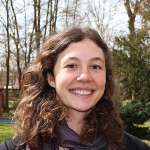Publications in Associated Project D-X1
- Pelzer, J., & Schulte, M. (2024). Efficient two-stage modeling of heat plume interactions of geothermal heat pumps in shallow aquifers using convolutional neural networks. Geoenergy Science and Engineering, 237, 212788. https://doi.org/10.1016/j.geoen.2024.212788
Research
About this project
The aim of this project is to simulate and optimise the locations of geothermal heat pumps in the pilot area of the city of Munich. This optimisation has two major difficulties: The temperature of the groundwater must not change too much for environmental reasons, and the negative interactions between neighbouring heat pumps should be minimised by clever positioning. A simulation of the groundwater flow is used to determine which heat pumps potentially interact and how much the groundwater temperature changes. The locations are optimised using an optimisation tool from TUM called urbs. The groundwater flow simulations are carried out with an existing flow simulation software called PFLOTRAN. This simulation does not scale well for the large area of the project and is comparatively slow. Therefore, a surrogate model is needed.
The surrogate model should consider the effect of special details such as subsurface buildings or surface properties and, at the same time, be fast to evaluate. In addition, the approach should be transferable to other areas. To cope with the large area, a decomposition into smaller sub-areas is being considered. These sub-areas could be clustered according to their influencing factors on the groundwater flow like surface sealing and Darcy velocity. Therefore, multi-scale approaches are being reviewed. Another aspect to be considered is the uncertainty of the results. For environmental protection, it is important to quantify the impact of heat pumps on the environmental system. Therefore, it is necessary to quantify how uncertain the predicted groundwater temperature is after the onset of the heat pumps. The algorithm will rely on the existing data set of over 30.000 spatial measurements and time series and the three-dimensional simulation of groundwater flow in PFLOTRAN as a validation system.
Contact

Miriam Schulte
Prof. Dr. rer. nat. habil.Project Leader, Research Project D02

Julia Pelzer
Doctoral Researcher, Research Project DX1


